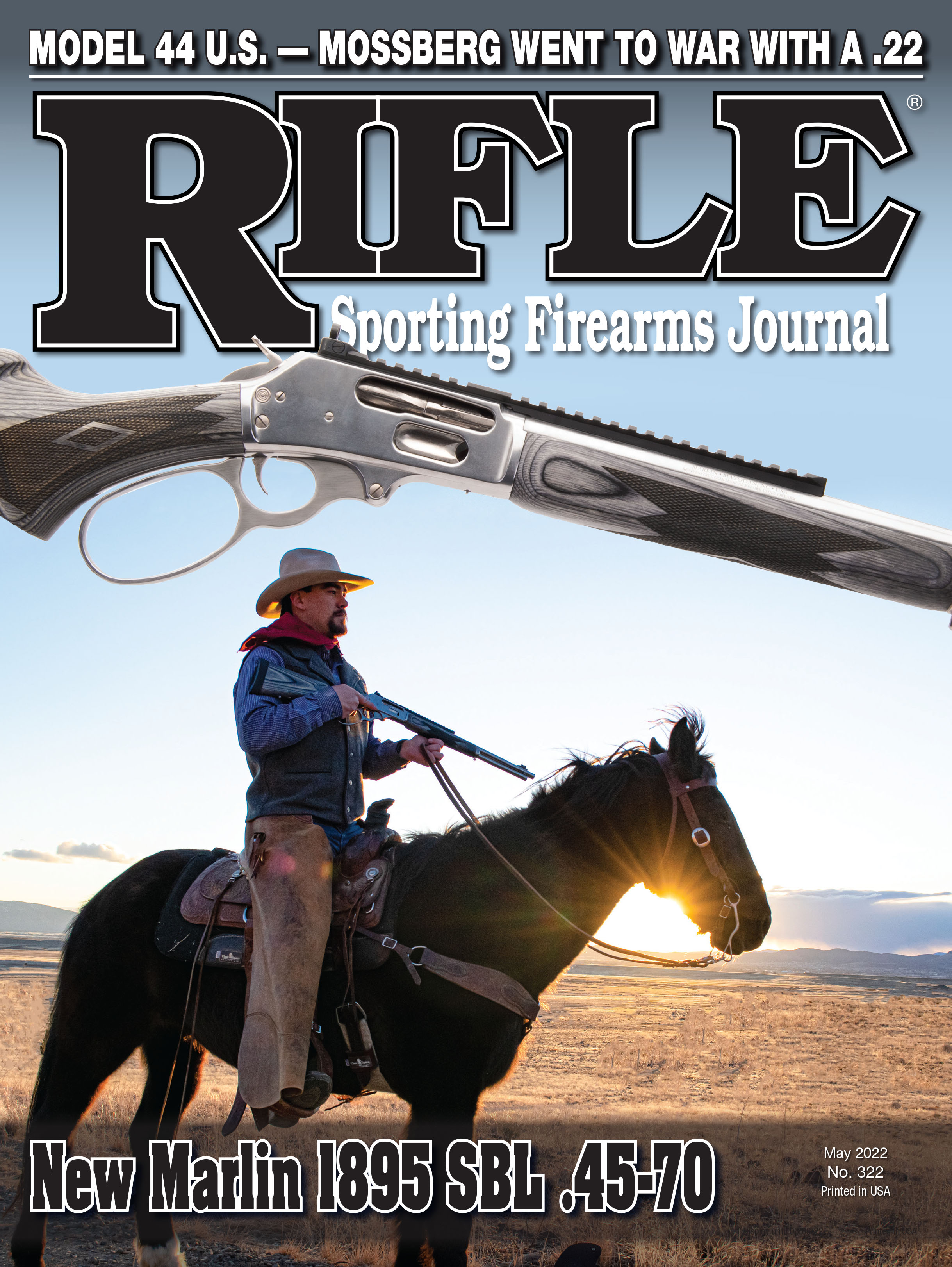Light Gunsmithing
Wood Screws
column By: Gil Sengel | May, 22
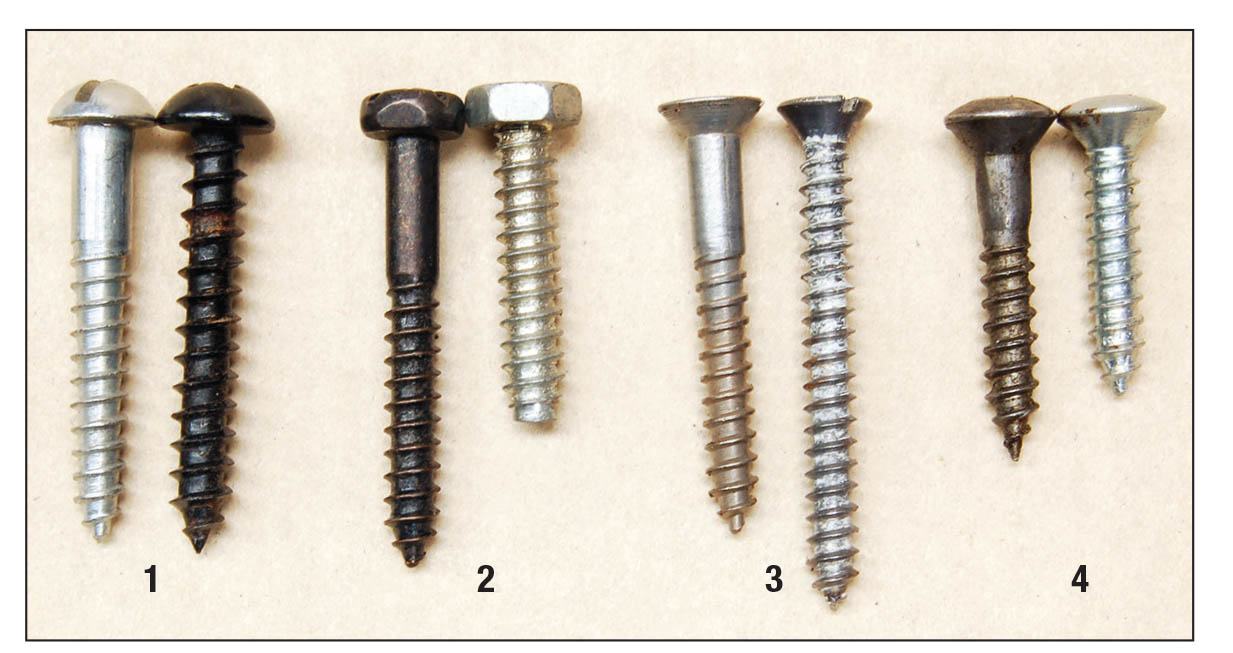
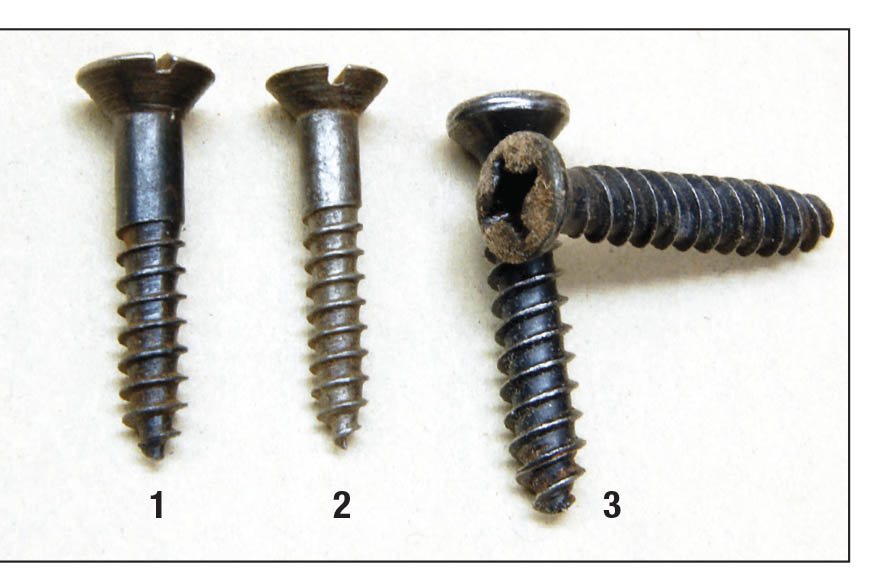
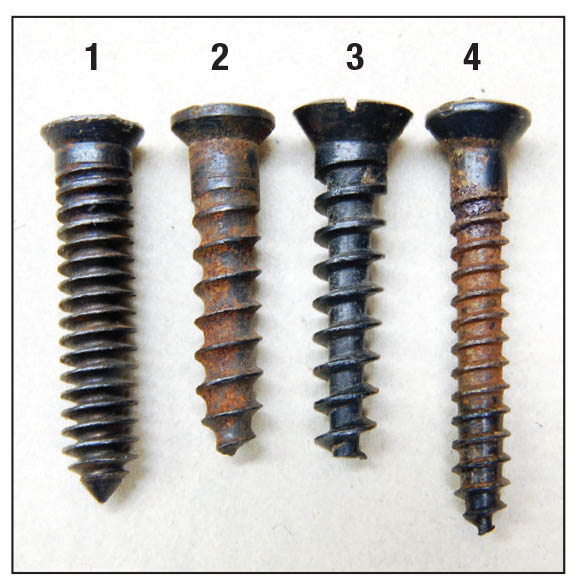
The first spiral thread fasteners were intended for wood because the later metal screw needed a tap to cut threads into the piece of metal it was attaching to and the bolt needed manufacture of a metal nut to thread into. These threads had to fit closely. The wood screw was not bothered by such restrictions; it formed its own threads when driven in comparatively soft wood. Thus thread form, height, shape and number varied considerably.
As thin sheet metals came into use for more and more items, a form of wood screw called the self-tapping or sheet metal screw was created. The only difference between them and true wood screws is that the threads run up to the head. On wood screws, the threads stop at varying distances short of the head. Both (with proper head type) are used interchangeably in firearms.
There is also one special wood screw anyone doing woodwork on guns will eventually find useful. This is the lag screw. Designed for outdoor timber construction, its smallest size (¼-inch diameter by 1 inch long) can be used to form certain large buttplate screws when fitting modified or reproduction buttplates. More on this later.
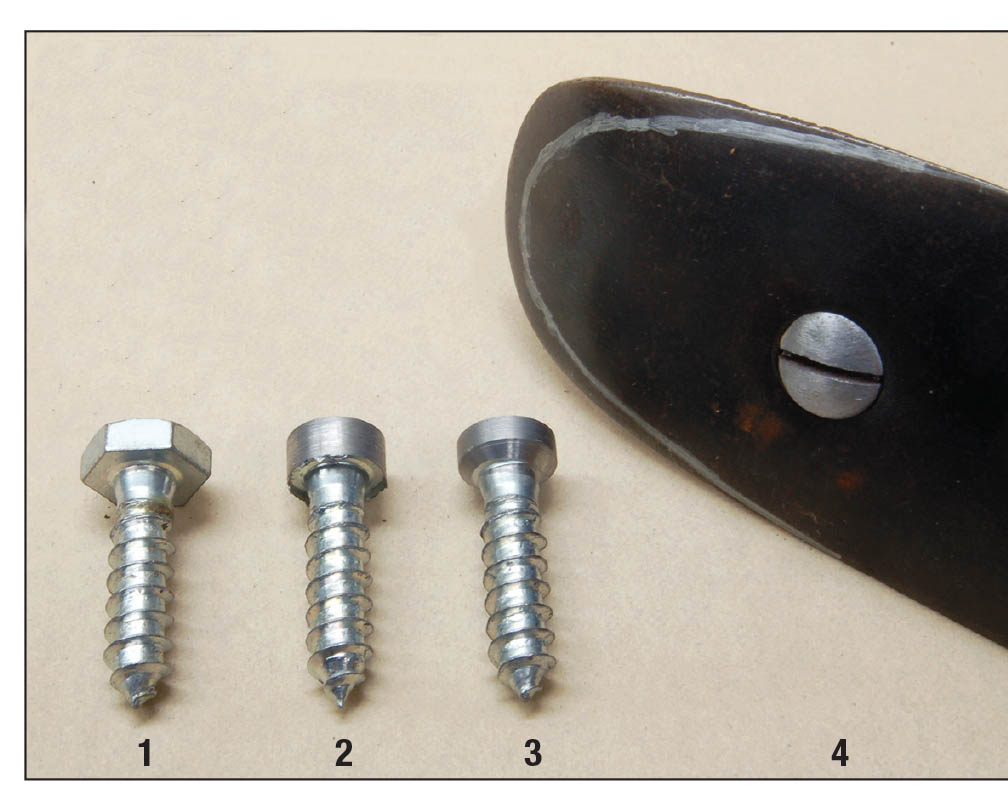
When a fine, full-depth thread screw is run into hard gunstock wood, the wood will not compress into the narrow bottom of the screw threads. It breaks down, sometimes leaving unattended wood in the threads that comes out with the screw when it is removed years later. This situation can be even worse if the screw was “fire-blued,” because this leaves a surface more susceptible to rusting than normal bluing. Since all wood contains moisture, these screws can come out with threads full of wood and a smooth-sided hole in the stock. A common solution of sorts is to place a section of flat toothpick in the hole. If the screw won’t draw up tightly, all that can be done is plug the hole and reinstall the screw.
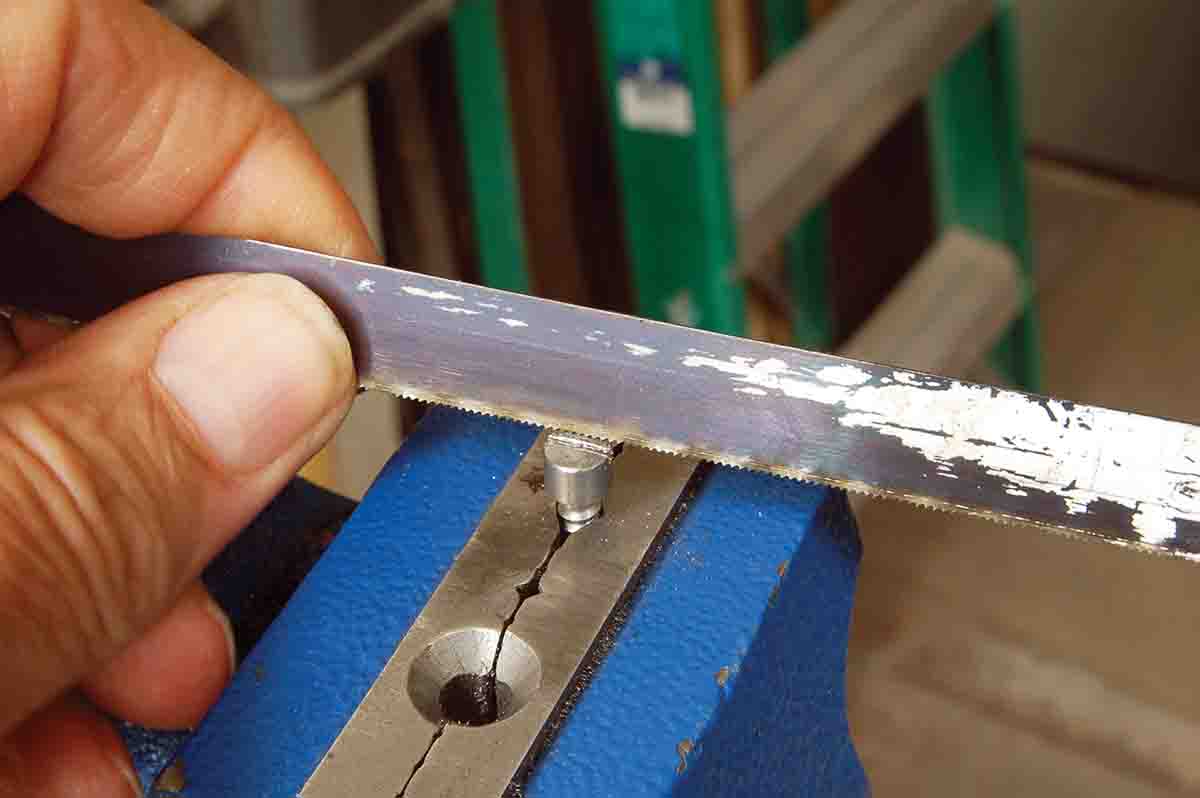
Just why this wood screw form lasted into the twentieth-century with some gun makers is puzzling. Most users soon recognized the problem and solved it by increasing the space between threads. Depth of threads were also decreased by 50 percent. Thus leaving far more undamaged wood.
This rather detailed knowledge of wood screws is valuable to shooters who like to trade guns. No dealer or collector will give as much in trade or outright purchase for a gun with damaged wood screw slots. Same for slots that are not aligned on higher grade guns or if an original wood screw has obviously been replaced by something else.
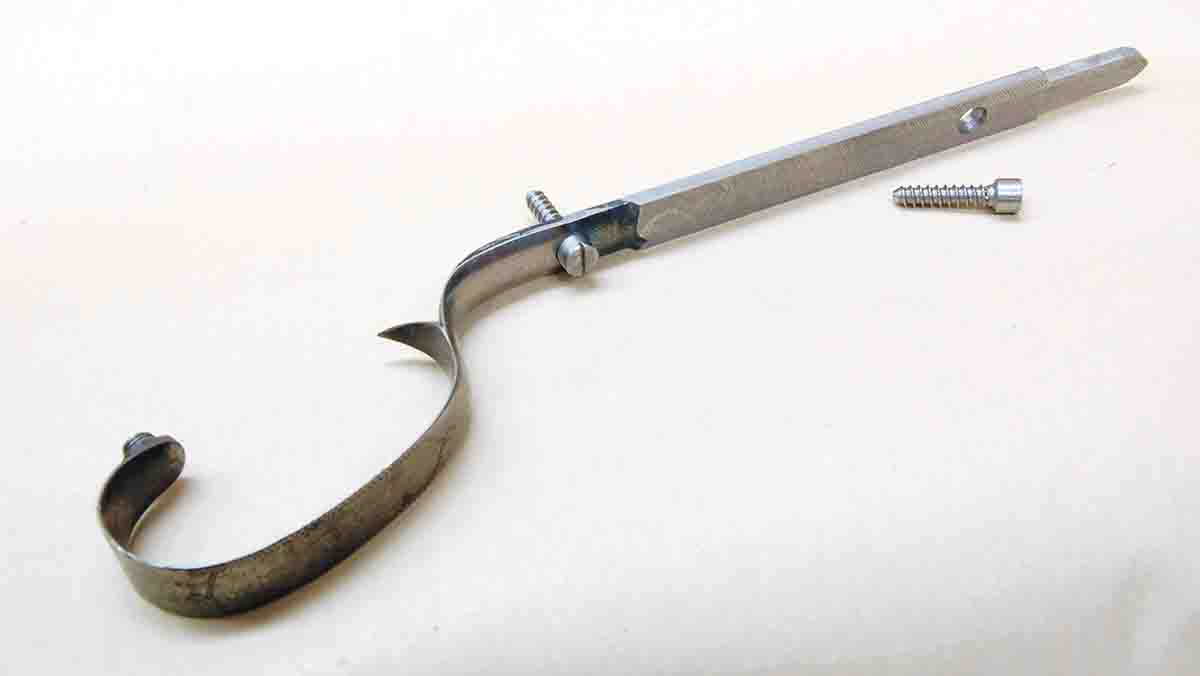
Misaligned screw slots always mean the gun has been disassembled. Often, this was just for an obvious stock refinishing or to repair damaged wood. However, if the metal was refinished and the fellow doing the reassembly couldn’t even get the screws right, what else might be wrong?
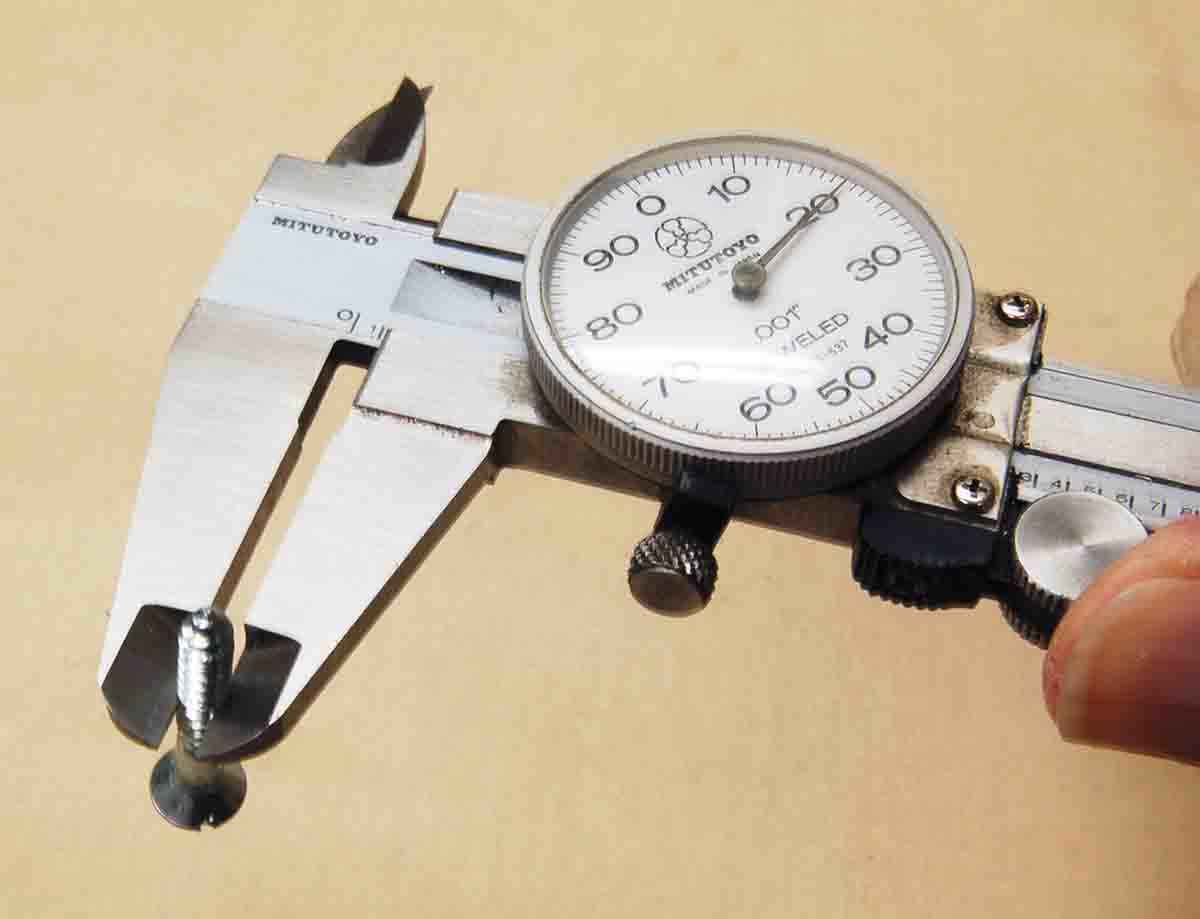
Then there is the wood screw that obviously isn’t supposed to live where it has taken up residence. A common example is a bright, plated, flat head Phillips drive screw in the buttplate of a pre-’64 Model 70 Winchester! Sometimes, there are two such screws. Given that wood screws don’t fall out of stocks like acorns off oak trees. Where can the originals have gone? No one knows, but since these guns have become a bit pricey of late, putting them back in original condition makes dollars and sense.
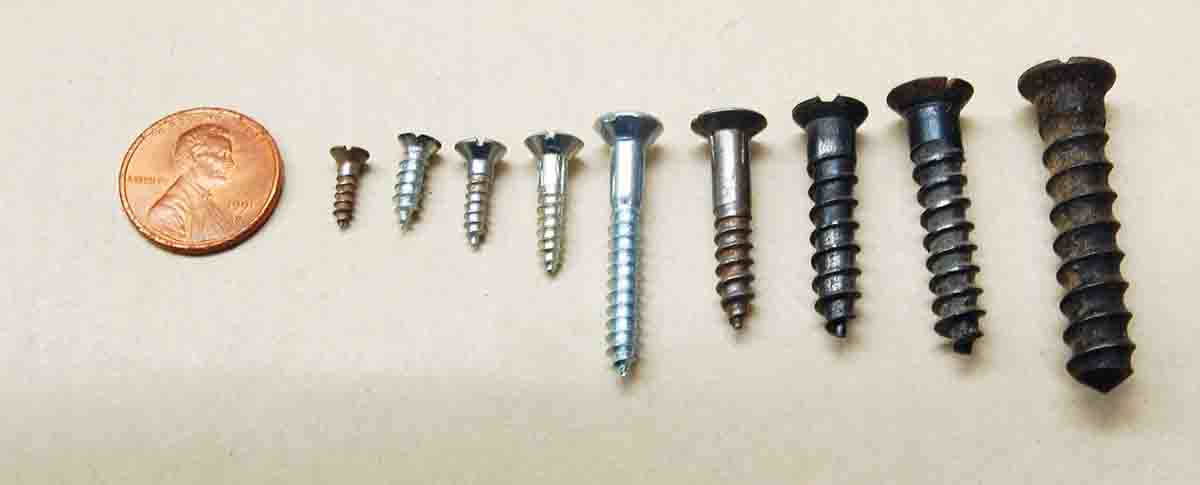
The proper screw for use in wood stocks of most all guns prior to 1960 is the slotted, oval head, wood screw, or self-tapping screw with a blued finish. This is always the screw used in quality double and single shots. Winchester, however, used poorly-blued flat head screws in many of its M70 and M12 grip caps earlier than this. At about the same time, Winchester and then later, some others began to use Phillips drive, self-tapping screws to hold plastic buttplates.
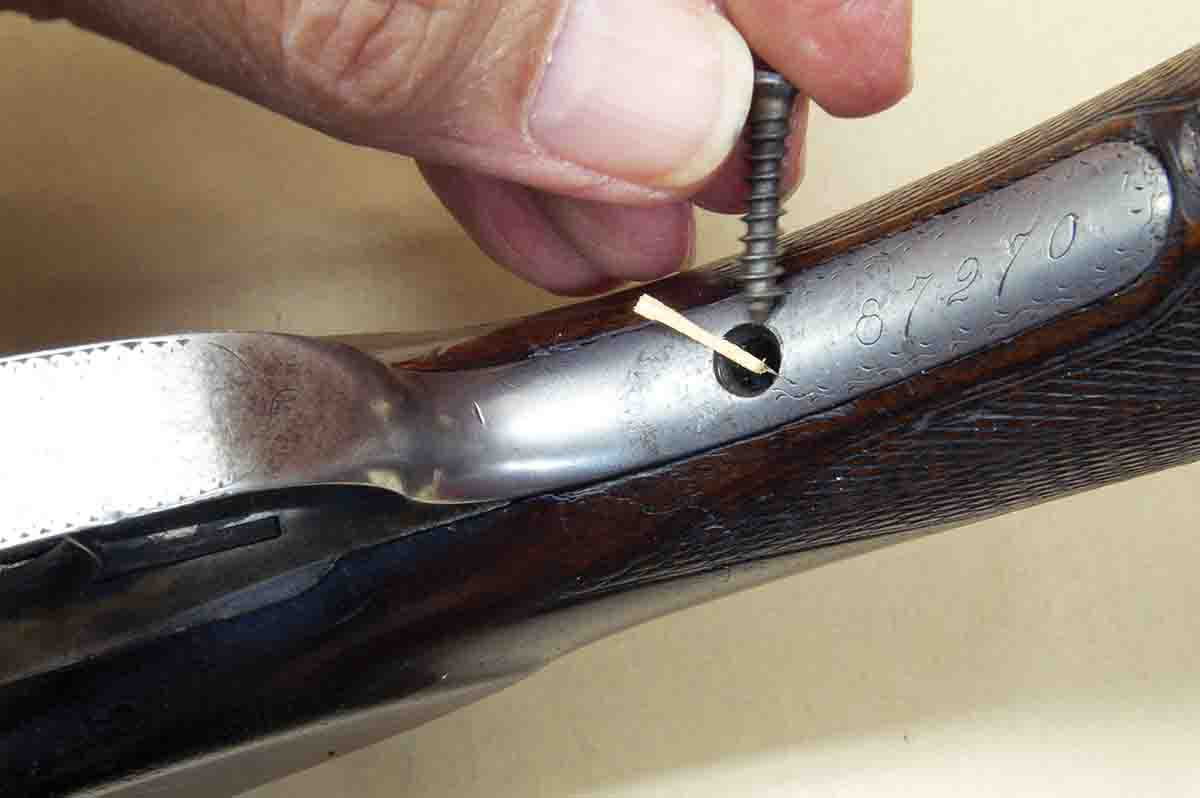
If slots must be aligned, a new screw is made between centers on a lathe. Small hobby lathes are ideal. The head must be left very thick as shown in the Parker trigger guard photo. A shallow slot is cut, the screw is run in tightly, location of the new slot is marked, the head is shaped to fit the tang and finally, a new slot is cut. A 32-tooth hacksaw blade makes a .035-inch slot, which is perfect. Making a new wood screw is really a last resort.
Earlier, I mentioned the use of the smallest size lag screw to alter as a replacement for the very large screws used in many early buttplates. They have coarse wood screw threads and thick hex heads that can be machined to fit the recess in the buttplate. Their steel also blues very well. My main use is for attaching old steel military plates that have been reshaped to sporting contour. These are fit to restocked rifles where a steel plate is wanted rather than one of plastic or rubber. It adds a unique touch of class to an otherwise plain-appearing rifle. A photo shows the steps required to do this.
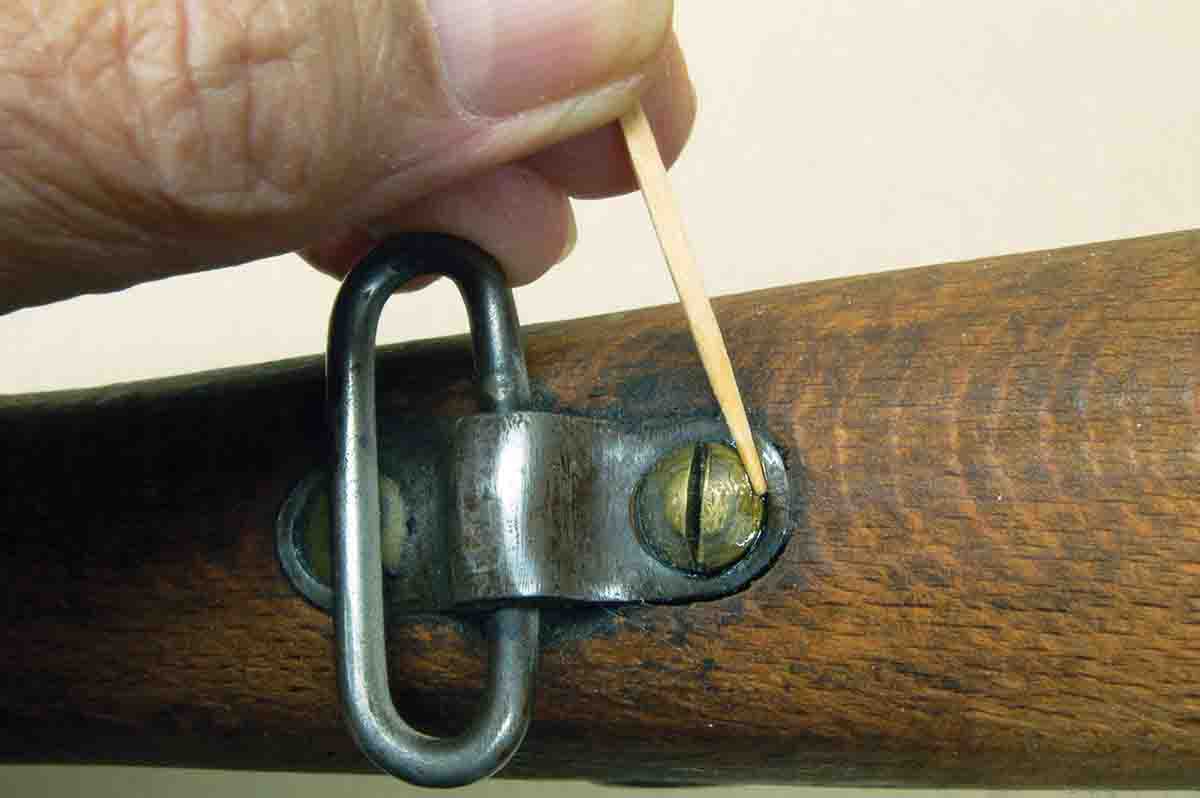
The use of a proper wood screw for both strength, as when attaching sling loop bases, or appearance in trigger guard tangs and buttplates, is just another example of doing a job correctly. Old Ben Franklin is supposed to have said, “Details are trifles but trifles make perfection and perfection is no trifle.” Well said Mr. Franklin, well said.


